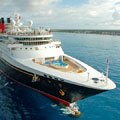|
|
|
| Republic of Cuba Travel Guide |
|
| Welcome to the Republic of Cuba on the Paradise Islands website. The island of Cuba is part of the Greater Antilles group and its the largest single land mass in the Caribbean. The Republic of Cuba lies just 90 miles south of the tip of Florida and its neighbours include Jamaica and the Cayman Islands to the south and the Republic of Haiti to the east. To the north east lie the Bahamas. |
| The main island of Cuba is 780 miles in length and 119 miles across at its widest point. The terrain is predominately flat or rolling plains. The Sierra Maestra mountain range is located in the southeast (which then dips under the sea and pops up again 200 miles to the south to form the Cayman Islands). The highest mountain is Pico Turquino at just under 6,500 feet. As well as the main island, the Republic of Cuba consists of more than 4,000 smaller islands and cays. |
|
Valle de Vinales
|
La Habana
|
Before the revolution in 1959, Cuba was a popular tourist destination for US citizens. The American mafia had considerable interests in both tourism and casinos in Cuba and together with large US companies, the United States had a great deal of influence, supported by Batista the ruling military dictator. Since the revolution, there has been a US trade and economic embargo. This has resulted in much of Cuba seemingly being left in a time warp.
Investment in tourism only re-started in the 1990's after the Republic of Cuba lost financial support from the disbanded Soviet Union. US citizens (with relatives in Cuba) have only been allowed to visit the island since 2009. Today, many of the tourists come from Canada and Europe and Cuba has found a new economic partner in China.
Part of Havana is a UNESCO World Heritage Site along with Willemstad (in Curacao); historic Bridgetown (in Barbados) and Old San Juan (in Puerto Rico).
|
|

|
The Jose Marti International Airport (Havana) is the main entry point for tourists with regular flights from Europe, Canada and Mexico. All tourists require an entry Visa which can be purchased in advance and is usually valid for 30 days. Furthermore, there is a departure tax of CUC 25 which bizarrely has to be paid in cash at the airport (there is no departure tax if leaving by sea).
The local currency is the "Convertible Pesos" (CUC). US dollars are not accepted anywhere in Cuba and if you exchange USD for the local currency there is a further 10% exchange penalty (fine!) on top of the exchange rate which other currencies are not subject to. Canadian Dollars, Sterling and Euros are widely accepted for currency exchange. Essentially, Cuba welcomes tourists from most nations except the United States! |
| Travel, holiday, vacation and cruise guide to Cuba and the Caribbean. All text and images are Copyright Paradise Islands org. All photographs on this travel guide website are obtained with the permission of the owners and come from various sources including the island's tourist boards. Republic of Cuba travel guide. |
|
|
|
|
|
|
|
|
|
Quick Facts
Capital
Havana
Main Airport
Jose Marti
International
Main Port
Havana
Language
Spanish
Currency
Cuban Peso
(CUC)
Government
Socialist Republic
Island Size
42,000
Square Miles
Population
11 Million
|
|

|
|
Cruise Port Guide
|
|
|